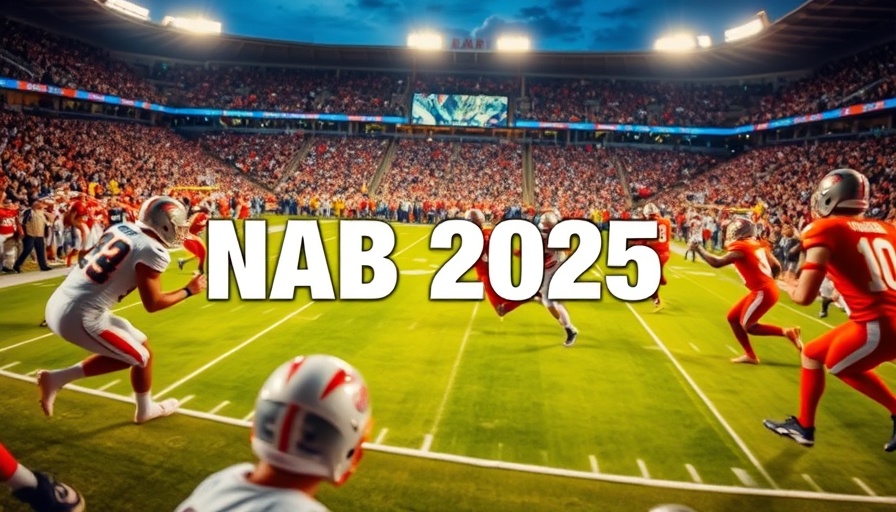
Vislink's Bold Move: Revolutionizing Live Video Streaming for 2025
As technology continues to evolve, the 2025 NAB Show is set to showcase some of the most exciting innovations in live video streaming. This year, Vislink is stepping up with groundbreaking advancements in RF (radio frequency), 5G, hybrid technology, and artificial intelligence (AI) that promise to change how content creators interact with their audiences. By all indications, this could be a pivotal moment for professionals in broadcasting and live events, particularly those interested in integrating AI technology into their workflows.
The Future of Broadcast: AI-Driven Innovations
Vislink's commitment to innovation is underscored by its focus on AI-driven solutions. AI technology is becoming increasingly crucial in optimizing the content delivery process and enhancing audience engagement. As broadcasters face the growing challenge of content saturation in digital media, AI tools that can analyze viewer preferences and streamline the production process are invaluable. For example, incorporating AI into live broadcasts may allow for real-time audience interaction and personalized content delivery, thereby creating a more engaging viewer experience.
5G and RF Technology: Transforming Live Event Coverage
The integration of 5G connectivity with RF technology is another highlight from Vislink, enabling high-quality video streaming with minimal latency. This means that event organizers can provide exciting live coverage with near-instantaneous feedback, enhancing both production value and viewer satisfaction. With 5G, remote locations that previously struggled with inadequate connectivity can now support high-bandwidth requirements for live streaming, which is a game-changer for sports and entertainment events.
Hybrid Solutions: Bridging Physical and Virtual Events
In today's world, where hybrid events are becoming the norm, Vislink's solutions address the essential need for seamless integration of in-person and virtual experiences. Their hybrid technology offers flexibility for event organizers, allowing them to engage both local and international audiences effortlessly. This innovative approach not only maximizes reach but also provides opportunities for interactive content that can cater to diverse audiences' preferences.
Anticipating Future Trends: What Lies Ahead
As we look toward the future, AI and connectivity will likely play significant roles in shaping the video broadcasting landscape. With emerging technologies, we can anticipate a range of applications that will revolutionize not only how content is created but also how it's consumed. AI-driven analytics will enable creators to tailor content more effectively to target demographics, while advancements in mobile technology will continue to enhance accessibility and flexibility in broadcasting.
Maximizing Potential: Steps for Industry Professionals
For AI enthusiasts and professionals in the broadcasting sector, staying informed and adapting to these innovations is key. Here are some actionable insights:
- Explore AI solutions that can enhance viewer engagement and streamline production processes.
- Invest in training to become proficient in harnessing 5G and RF technologies for improved live streaming.
- Experiment with hybrid event models to attract a broader audience base in future projects.
- Engage with industry forums and workshops at the NAB Show to network with other professionals and share best practices.
The advancements showcased by Vislink at NAB 2025 highlight a critical juncture for the live streaming industry. It represents not just an opportunity for technological growth, but a chance for all content creators and broadcasting professionals to level up their capabilities in an ever-evolving digital landscape.
As we prepare for this exciting event, embrace the changes coming your way. Stay ahead of the curve and explore the wealth of opportunities available through the innovations highlighted at the NAB Show. The future of live video streaming is here, and you won't want to miss what lies ahead!
 Add Row
Add Row  Add
Add 




Write A Comment